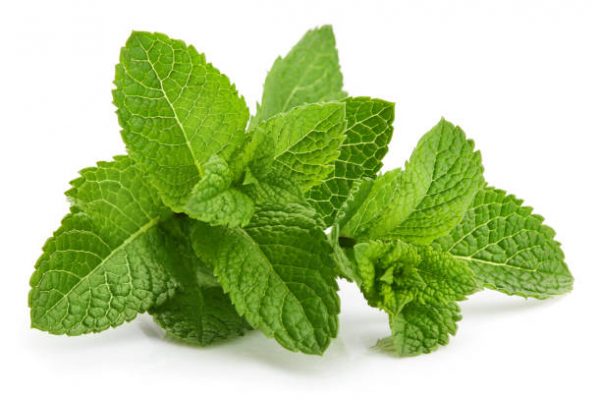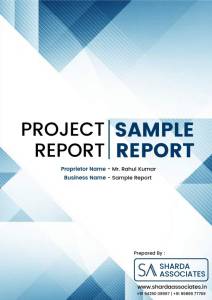Project Report For Menthol Plant
Introduction
Project Report For Menthol Plant is as Follow.
The menthol plant, technically known as Mentha arvensis, is a perennial herb of the Lamiaceae mint family. It is commonly grown for its essential oil, which has a high concentration of menthol, a chemical known for its cooling and refreshing qualities.
The menthol plant is native to Asia, mainly India, although it is currently farmed in many parts of the world. Menthol plants normally grow to a height of 30-90 cm and have square-shaped, branching stems. It has green leaves that are tiny, aromatic, and lance-shaped. During the summer, the plant blooms, producing small pink, purple, or white flowers in clusters at the summits of the stalks. The blossoms attract bees and other pollinators.
The major draw of the menthol plant is its essential oil, which is extracted principally from the leaves using a technique known as steam distillation. When applied to the skin or mucous membranes, menthol oil has a strong, minty fragrance and provides a cooling feeling. It is widely utilised in a variety of sectors such as medicines, cosmetics, personal care goods, and food and drinks.
Menthol is commonly used in the pharmaceutical industry in analgesic balms, cough syrups, and throat lozenges due to its relaxing and numbing properties. It is prescribed for minor aches and pains, sore throats, and nasal congestion. Menthol is also commonly found in oral hygiene products like toothpaste and mouthwash, where it produces a pleasant and cooling sensation.
Menthol is used in the cosmetic and personal care industries for its cooling and revitalising qualities in skincare products, shampoos, soaps, and body washes. It is said to provide a toning and refreshing effect on the skin, and its perfume delivers a pleasant sensory experience. Menthol is often utilised in fragrances and perfumes for its minty aroma. Also, menthol is commonly utilised in the food and beverage industries to add flavour and cooling benefits to items such as chewing gum, sweets, confectionary, and drinks. It has a pleasant taste and a cooling effect on the mouth.

Benefits OF Menthol Plant
Cooling And Soothing: Menthol has a cooling impact on the skin and mucous membranes. It relieves mild aches, pains, and irritation, making it a popular component in analgesic balms, topical creams, and ointments.
Respiratory Relief: Menthol is proven to relieve nasal congestion and give the sense of better breathing. It is frequently used in cough syrups, throat lozenges, and inhalers to relieve symptoms of respiratory discomfort.
Refreshing Feeling: The minty scent and cooling sensation of menthol create a refreshing and energising experience. It is utilised to provide a pleasant sensory impression in cosmetics, personal care products, and oral hygiene products.
Flavor Enhancement: Menthol is used in food and beverages to create a refreshing, minty flavour. It is widely found in chewing gums, sweets, confectionary, and drinks, where it enhances taste and leaves a pleasant aftertaste.
Insect Repellent: Menthol contains insect-repellent characteristics and is used in a variety of formulations to repel mosquitoes, flies, and other insects. It is present in insect repellent sprays, creams, and lotions.
Market Potential OF Menthol Plant
The menthol market has a value of USD 39.13 billion in 2021 and is anticipated to grow at a CAGR of 5.30% to reach USD 59.15 billion by 2029.
During the assessment period, the worldwide menthol market is expected to expand at a CAGR of 5.30%. The market’s expansion may be ascribed primarily to factors such as rising demand for menthol cigarettes, high demand for menthol as a pain reliever, and expanding usage of menthol in various medical goods such as nasal sprays and ointments.
Furthermore, because menthol is regarded as a safe and effective treatment for treating minor discomfort with no side effects, demand will rise in the coming years. Market participants should concentrate on raising awareness about the benefits of menthol and seizing possibilities in the nutraceutical and pharmaceutical sectors.
The fast pace of urbanisation in India, improved living conditions, and rising disposable income drive demand for natural plant-based health and cosmetics, which are likely to drive the growth of the India menthol crystal market.
Furthermore, the India menthol crystal market is being influenced by an increase in demand for natural menthol crystals in the food and beverage sectors as a flavour and fragrance agent in food such as chewing gums, candy, confectionary, and flavour and fragrance agents in a beverage.
Project Report Sample On Menthol Plant
Need Help?
Create 100% Bankable Project Report

